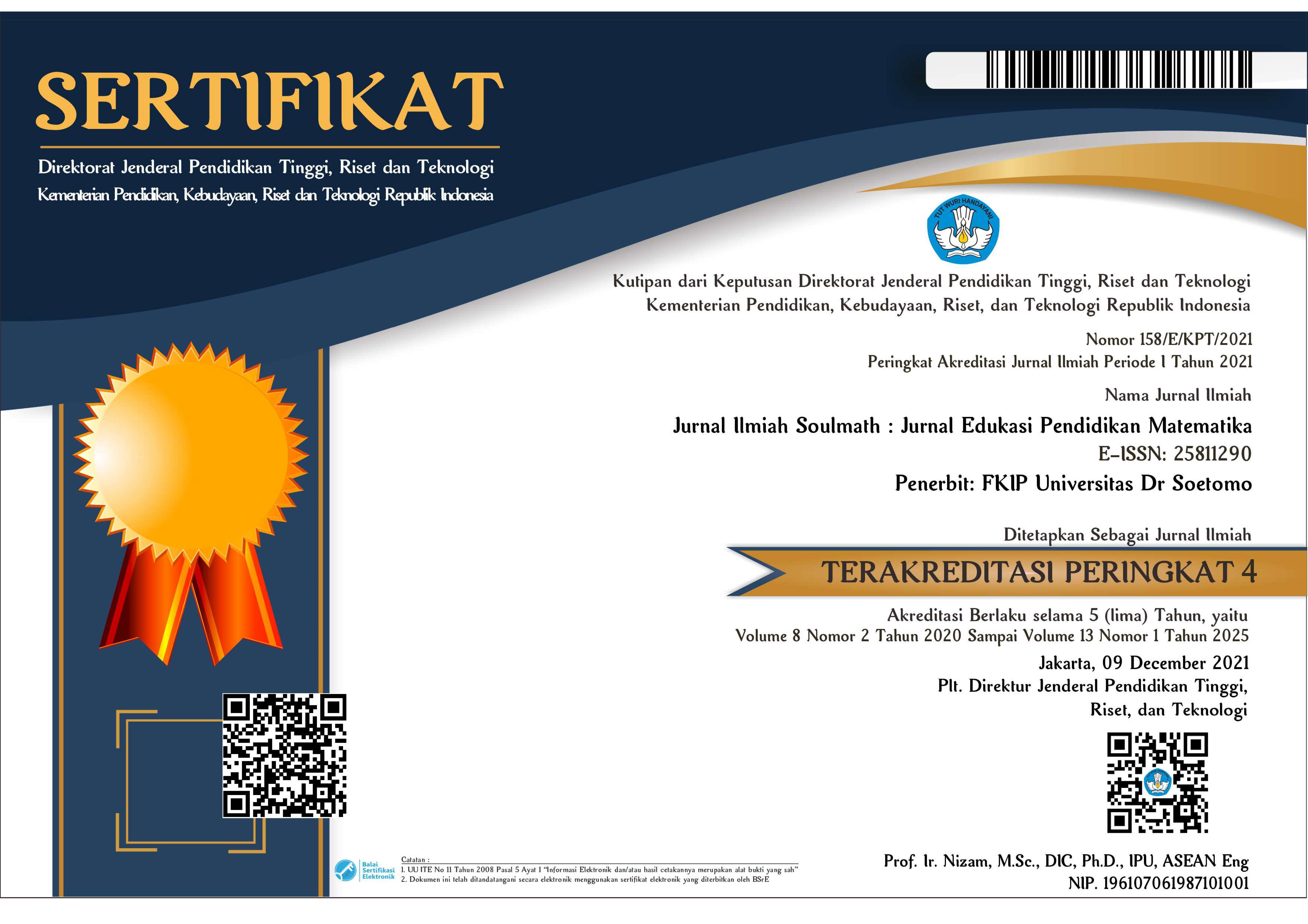PRESERVICE TEACHERS’ TECHNIQUES FOR GENERATING NEW PROBLEMS
 Abstract views: 331
,
Abstract views: 331
,
 PDF downloads: 297
PDF downloads: 297
Abstract
Evaluating students’ achievement is one significant part of teachers’ pedagogical competency. However, teachers should give problems in vary to their students. The ability of the teachers in developing the new problem from the existing or available problems is necessary to be mastered. This paper aimed to analyze preservice teachers’ techniques in developing new problems. Twenty-nine preservice teachers who had experience in internship program were given three mathematical problems each in probability, trigonometry and number and pattern. They were asked to generate new problems from those problems given. The techniques used by the teachers on generating new problems from the original problems were analyzed and classified as replacement, addition, modification, contextualizing the problem, turning around the problem, and reformulation technique. In summary, teachers are most frequently taking the same given information but changing the problem from the old one. Teachers were still unfamiliar to turn the problem around by taking the end goal as given and the given as the end goal. The implication of this study is lecturers of mathematics education program especially in the subject that contains assessment and evaluation need to consider about developing the preservice teachers’ ability to generate new problems from the old or existing problem given in all types of the development.
Downloads
References
[2] S. Crespo, “Learning to pose mathematical problems: Exploring changes in presertive teachers’ practices,†Educational Studies in Mathematics, vol 52. No 3, pp. 243-270, 2003.
[3] S. Crespo & N. Sinclair, “What makes a problem mathematically interesting? Inviting prospective teachers to pose better problems,†Journal of Mathematics Teacher Education, Vol. 11, pp.395-415, 2008
[4] H. P. Osana & I. Pelczer, “A Review on Problem Posing in Teacher Education,†In Mathematical Problem Posing. Research in Mathematics Education, F. Singer, N. Ellerton & J. Cai, Ed, New York: Springer, 2010
[5] E. Zakaria & F. Salleh, “Teachers’ Creativity in Posing Statistical Problems from Discrete Dataâ€. Creative Education, Vol 3, pp 1380-1383, 2012.
[6] L. Chen, W. Van Dooren, Q. Chen, et al. “An Investigation on Chinese Teachers’ Realistic Problem Posing and Problem Solving Ability and Beliefsâ€, Int J of Sci and Math Educ, Vol. 9, pp. 919-948, 2011
[7] J. Xie and J. O. Masingila, “Examining Interactions between Problem Posing and Problem Solving with Prospective Primary Teachers: A Case of Using Fractions,†Educ Stud Math, Vol. 96, pp. 101–118, 2017
[8] C. P. Vistro-Yu, “Using Innovation Techniques to Generate ‘New’ Problems,†In Mathematical Problem Solving,†B. Kaur, B. H. Yeap & M. Kapur, Ed. Toh Tuck Link: World Scientific Publishing Co. Pte. Ltd, 2009.
[9] L. W. Anderson & D. R. Krathwohl, A taxonomy for learning, teaching, and assessing: A revision of Bloom's taxonomy of educational objectives. New York: Longman, 2011.







